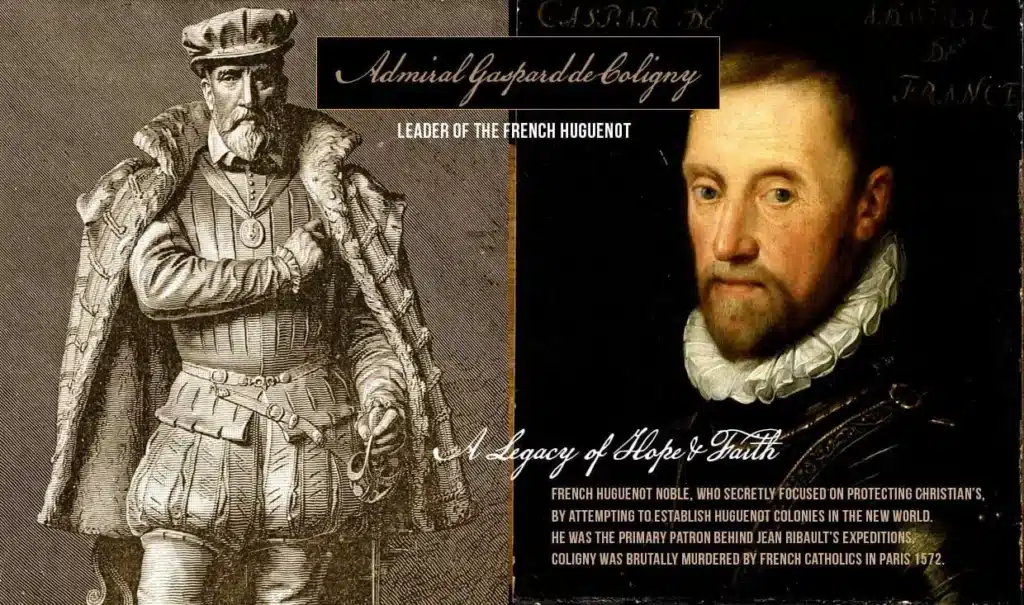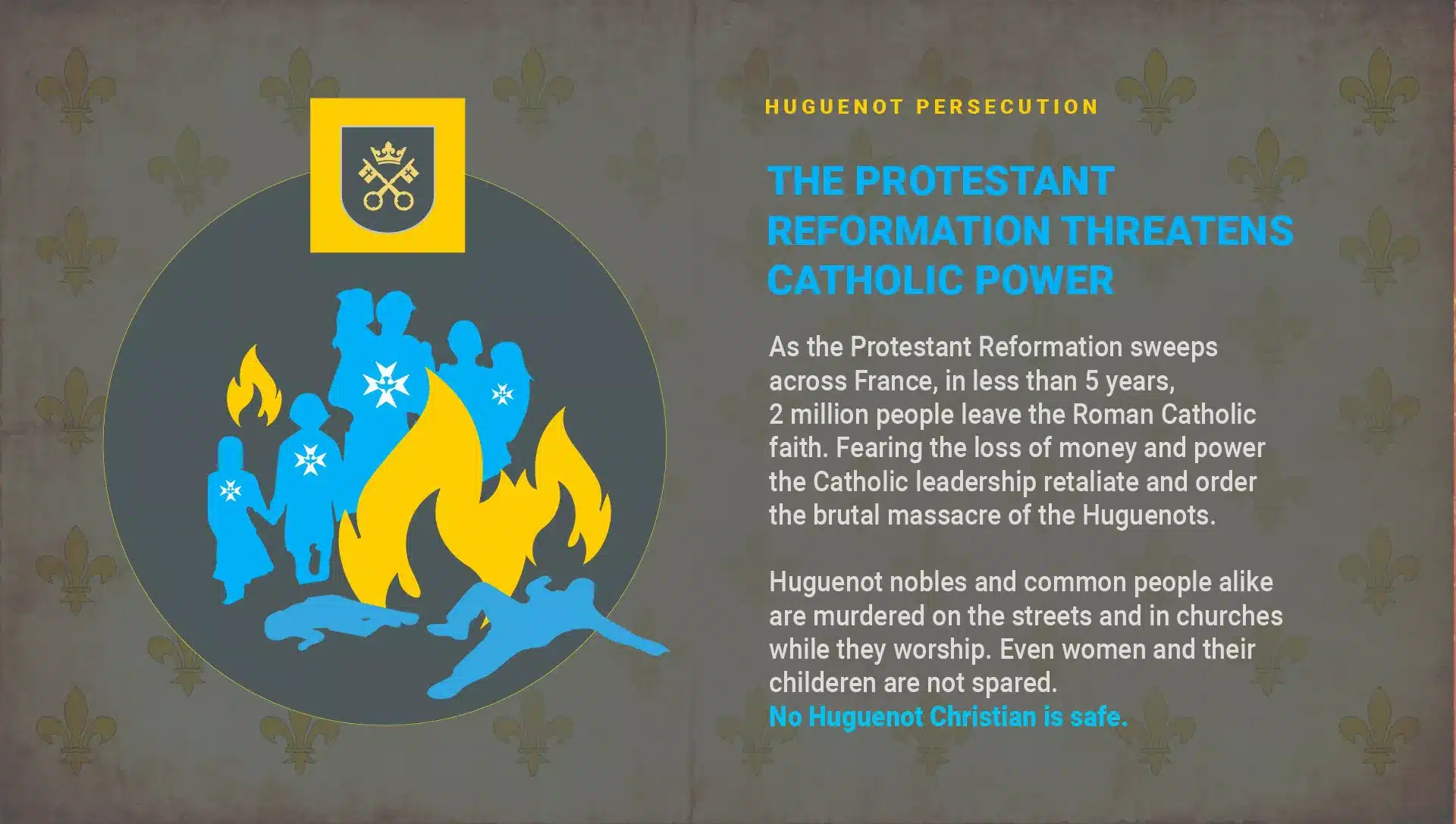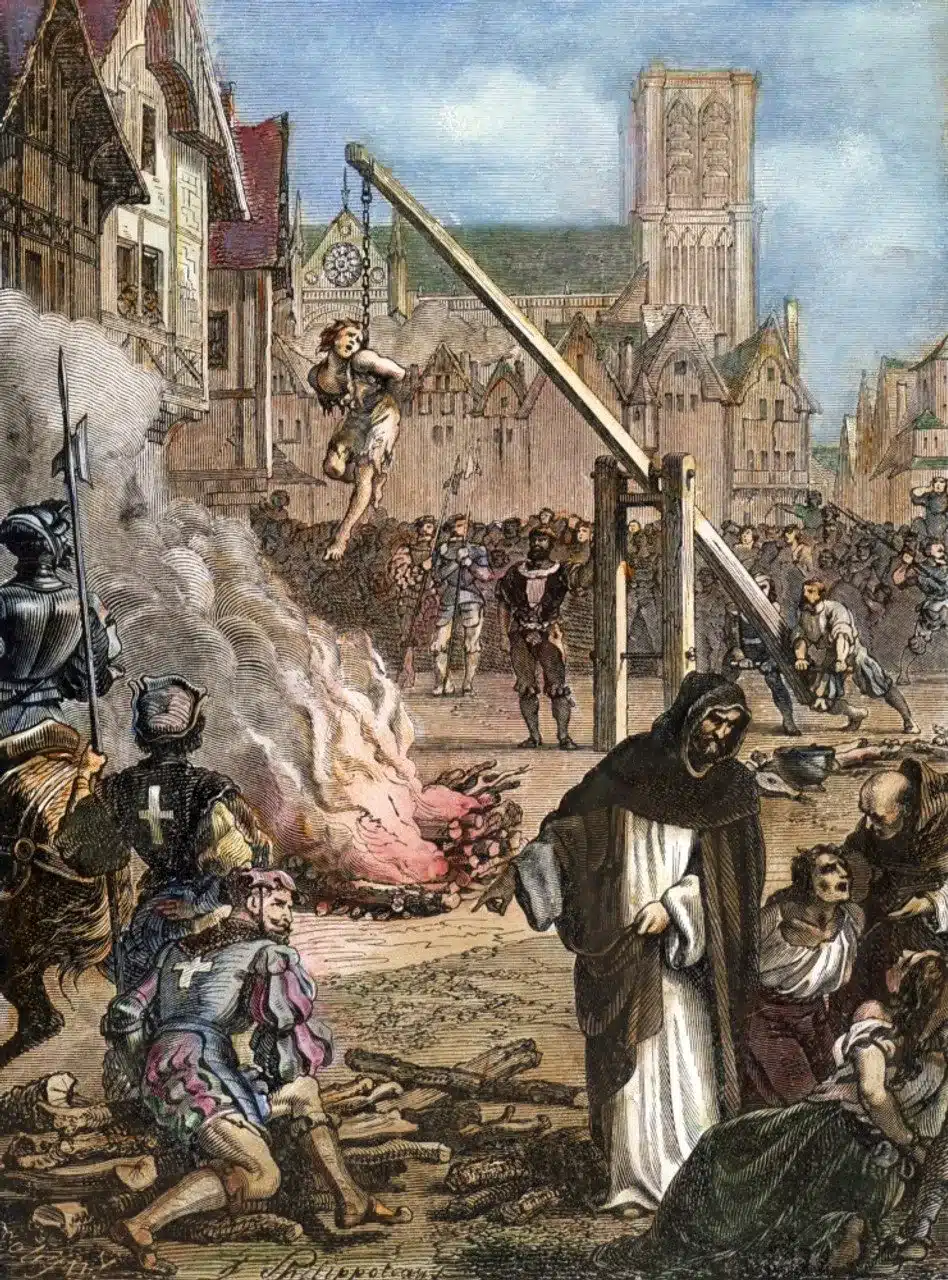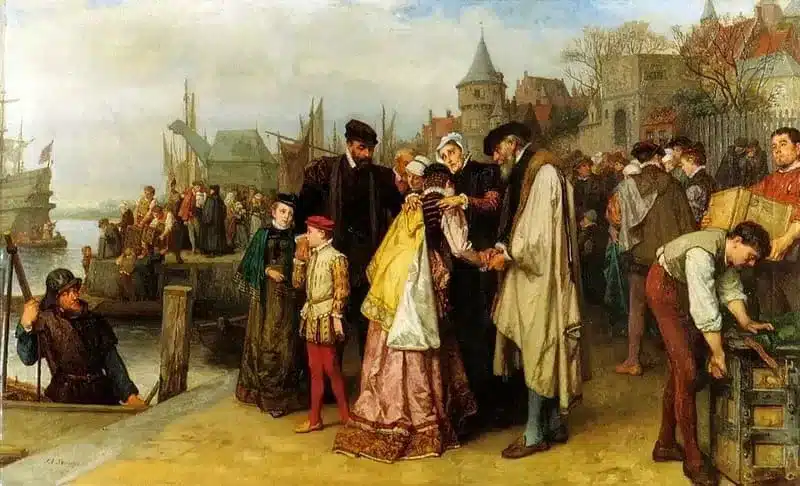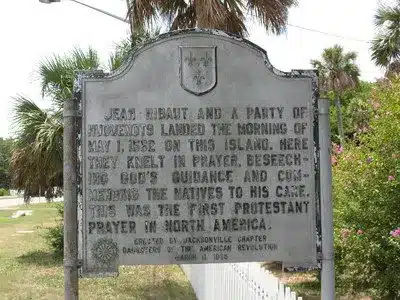The French Protestant Legacy: A Journey to Huguenot History
Amidst France’s renowned heritage and diverse culture lies a lesser-known chapter in its history—the captivating narrative of the French Huguenots. Who were the French Huguenots, then? The Huguenots were a group of Protestant Christians (Calvinists. Followers of the teachings of the reformers John Calvin, and Martin Luther) who emerged during the religious turmoil of the 16th and 17th centuries, finding themselves consistently persecuted for their faith in Jesus Christ.
In spite of this, the Huguenots persevered. They were instrumental in shaping the social, political, and religious landscape of French society during a time of religious and political unrest. Their determination to practice their Christian faith in the face of persecution not only showcased their resilience but also highlighted the importance of religious freedom. As part of the Protestant Reformation that was raging like wildfire across Europe, these followers of Jesus Christ rejected the corruption of the Roman Catholic Church and paid for it with their lives.
They reached far beyond the borders of France, leaving a mark that can still be felt today. The descendants of Huguenot families exist in various European nations. They are also found in the United States, Canada, Australia, and South Africa, where people celebrate a unique Huguenot heritage.
In the following sections, we will explore more about the Huguenots. We will look at their origins and their struggles for religious freedom. Additionally, we will explore their contributions to the arts and sciences and the enduring impact they have had on the societies they influenced. Join us as we unravel the remarkable tale of a group that defied oppression, forging an enduring legacy.
Who Were the French Huguenots: Their Origins
Definition and Origin of the term “Huguenot”
Scholars believe that the term “Huguenot” originates from a few possible sources. The first is from the German word “Eidgenosse,” which means “confederate”. The Huguenots were part of a confederation of Reformed churches in Switzerland, the Netherlands, and parts of Germany.
There’s a popular belief that they took their name from Besançon Hugues, a leader in the early movement who belonged to the Calvinist Christian tradition. Another possible origin is from the French word “Hugon,” which was the name of a spirit that was said to haunt the streets of Tours during the night. The Protestants in Tours, who held their religious services in secret and often under cover of darkness, were mockingly referred to as “Huguenots” by the Catholics. The term “Huguenots” became associated with the Protestant movement and was initially used as a derogatory term.
Background of French Protestantism
The emergence of the Huguenots traces back to the teachings of Martin Luther, a German theologian known for his role in the Protestant Reformation. Influenced by Luther’s ideas, a Frenchman named John Calvin became a key figure in the development of Protestant theology. Calvin’s teachings spread throughout Europe, gaining a significant following in France, particularly among the educated and affluent members of society. As the number of Huguenots increased, so did tensions between the Catholics and the French Protestants.
During the 16th and 17th centuries, religious conflict was rampant throughout Europe. The turmoil created an environment of continuous persecution for the Huguenots. They faced forced conversion to Catholicism, imprisonment, fines, and even death. Despite these hardships, the Huguenots remained steadfast in their faith, and their numbers continued to grow. To escape religious persecution, many eventually had to leave France. Some traveled as far as the American colonies in search of religious freedom to worship.
Who Were the French Huguenots: The Spread of Their Beliefs
The Huguenots were French Protestants who emerged in France during the sixteenth century. They were spurred by the winds of religious change that swept through Europe as a result of the Protestant Reformation. As adherents to the teachings of John Calvin, the Huguenots held specific beliefs and practices. These beliefs and practices set them apart from the predominant Roman Catholic Church of their time.
Central to Huguenot beliefs and practices were the doctrines of predestination and the sanctity of the individual conscience. Additionally, they emphasized the importance of Bible study in the vernacular. They repudiated many Catholic Church practices, including the veneration of saints, the use of idols, and the Pope’s authority. Instead, they sought to purify their own faith and return to the original principles of early Christianity. The Huguenots, as expressions of religious dissent, sought to establish a Reformed version of Christianity. They focused on a personal relationship with God, the authority of the Bible, and a simplified style of worship.
Huguenot worship services embody simplicity and emphasize Biblical teachings and sermons, accompanied by communal singing of Psalms. Their faith emphasized the value of living a disciplined and godly lifestyle while also cultivating a strong sense of community. This led to the establishment of schools and various charitable institutions by the Huguenots.
The rise of Huguenot beliefs and practices throughout France and Europe transpired in volatile political and religious turmoil. It had a profound impact on the French society, culture, and politics of the time, leading to a complex web of alliances and tensions that spread across the European continent.
Who Were the French Huguenots: Their Persecution
For centuries, the majority of French society persecuted the Huguenots due to their religious beliefs that differed from the Catholics’. To comprehend the reasons behind their persecution, it’s crucial to examine the question of religion and culture in pre-revolutionary France.
At the time, the Catholic Church and the French monarchy controlled the majority of French society’s Catholicism. The Catholic Church possessed immense power and influence, and the monarchy was determined to preserve that power and influence. Initially, the French monarchy was tolerant of the Huguenots, but as their influence grew, so did hostilities between them and the Catholic majority. They viewed the Huguenots as a threat to their authority.
The Huguenots posed a political threat to the French monarchy.
They established their own political and religious authorities, exhibiting a high level of organization. They had a strong sense of unity and loyalty among their members. The power of the Huguenots posed a challenge to the monarchy, and the monarchy was determined to break that power.
The Huguenots also had a number of distinctive characteristics that made them a target for persecution.
They were educated and literate, with a strong sense of self-determination and autonomy. Their reputation for hard work and entrepreneurship threatened the economic stability of the French aristocracy.
The Huguenots were also persecuted because of their different convictions.
They sought to live according to their own faith and beliefs, rejecting the authority of the Catholic Church and monarchy. This was anathema to the Catholic Church and the monarchy, which sought to preserve their control over French society.
As a result, the French monarchy launched a campaign to suppress the Huguenot faith. They banned Huguenot literature, prohibited their worship services, and revoked their rights as citizens. In a series of wars between 1562 and 1598, the two factions’ conflict spilled over into neighboring countries such as England, the Netherlands, and the German states. The St. Bartholomew’s Day Massacre of 1572, which killed thousands of Huguenots, remains a stark reminder of the era’s brutality.
The Reign of Terror Against Huguenots
The French Huguenots were a significant and influential religious group instrumental in shaping the development of religious doctrines and state policies across Europe. They emerged in the context of the Reformation, opposing the doctrine and authority of the Roman Catholic Church. As a religious minority in a predominantly Catholic nation, the Huguenots experienced severe persecution and violence from the French monarchy. Political rivalry and a desire for religious uniformity fueled this persecution. This culminated in a series of brutal events that marked the apogee of Huguenot persecution, the Reign of Terror against Huguenots, and the St. Bartholomew’s Day Massacre.
The Reign of Terror against Huguenots took place during the French Wars of Religion. It was a prolonged theological and political struggle between Catholic and Protestant Church factions in France from 1562 to 1598. The worst of the violence occurred between 1572 and 1578, as the French Crown sought to suppress and eliminate Huguenot communities and practices. The authorities subjected Huguenots to oppressive measures, including forced conversion to Catholicism, imprisonment, and execution. The Crown’s justification was that the Huguenots posed a threat to national unity and order, as well as to the doctrines and authority of the Catholic Church.
The St. Bartholomew’s Day Massacre
The most notorious and devastating instance of Huguenot persecution occurred on August 23, 1572, with the St. Bartholomew’s Day Massacre. This event began as a targeted assassination of key Huguenot leaders in Paris and spiraled into a widespread and merciless slaughter of thousands of Huguenots across the city.
Catherine de Medici, the powerful mother of the young King Charles IX, ordered the massacre in response to a failed assassination attempt on the prominent Huguenot leader, Admiral Gaspard de Coligny. The massacre quickly spread beyond Paris, leading to mob violence and brutal killings of Huguenots in cities and towns across France. In the weeks that followed, the death toll reached up to 30,000 Huguenots. The events of St. Bartholomew’s Day had profound and lasting effects on French society, deepening the religious divide between Catholics and Protestants and accentuating the need for political and religious reform.
The persecution of the French Huguenots illustrates the complexities of religious conflict and the interplay between political power and religious identity in early modern Europe. Despite the violence and terror they faced, the Huguenots’ resilience and determination to live according to their faith are important testaments to the power of religious conviction and the human capacity for survival. The legacy of the Huguenot experience lives on in the spirit of religious tolerance.
The Huguenot Diaspora
The Huguenots flee France
The increasing tensions between the Catholic and Protestant faiths in France culminated in the St. Bartholomew’s Day Massacre in 1572, during which thousands of Huguenots were murdered. The horrific event marked a turning point, and a steady stream of Huguenots began to flee the country in search of safety and religious freedom.
Over time, the Huguenots were able to secure some level of freedom and protection through the Edict of Nantes (1598), which granted them the right to worship and participate in public life. However, King Louis XIV revoked the edict in 1685, which caused a large-scale Huguenot exodus from France to other parts of Europe and beyond. They sought refuge in a multitude of nations, including England, the Dutch Republic, Switzerland, Germany, and even as far as South Africa and the colonies of North America.
Huguenots in other Countries
These migrations heavily contributed to cultural, religious, and political diversity in several European countries and colonial settlements in the Americas and South Africa. The Huguenots played a pivotal role in shaping European history and contributed significantly to the cultural evolution of their host countries.
Huguenot French refugees in England were a significant demographic group and had a considerable impact on English society. Many skilled artisans among them, such as silversmiths and weavers, actively helped stimulate local industries. They pioneered the development of the British textile industry, introducing innovations in silk weaving and dyeing.
Politically, the Huguenot immigrants played a significant role in the Glorious Revolution of 1688, when Protestant William of Orange replaced Catholic James II on the English throne. Their presence in the English military and their service in the cause of religious liberty made them crucial allies for the English monarchy and the Protestant faith.
Similarly, the Netherlands, a center for religious tolerance during that time, welcomed the Huguenots and allowed them to flourish in many fields. In many cases, Huguenot immigrants took on prominent social and commercial roles in these countries and also contributed to the growth of the arts and sciences. Despite the fact that many Huguenots assimilated into local populations or joined other Protestant denominations, their tenacity, devotion, and resilience left an impact and an enduring legacy that are still noticeable in many parts of the world.
Who were the French Huguenots: Their Contribution to the Modern World
The Huguenots significantly impacted various aspects of the modern world, including science and industry, as well as literature and arts. Many Protestant refugees fleeing persecution found new homes across Europe, especially in England and the Netherlands, where they received a warm welcome for their skills and expertise. As a result, they introduced a wealth of talent and knowledge that augmented the scientific and industrial revolution across the continent.
Science and Industry
Huguenots played a crucial role in the scientific revolution of the Early Modern period, with their contributions to fields like medicine, physics, and chemistry. One such example is William Harvey, an English physician of Huguenot descent, who first discovered blood circulation in the human body and the role of the heart as a pump. This discovery laid the foundation of modern cardiovascular physiology and significantly advanced medical science.
Another figure, is Blaise Pascal, a renowned French mathematician and physicist. Pascal is celebrated for his groundbreaking contributions to probability theory, which has vast applications in modern-day statistics and actuarial sciences. He also invented Pascal’s Triangle and contributed to advancements in fluid mechanics.
The Huguenots also extended their influence in industry with their skilled craftsmanship and knowledge of manufacturing techniques. They brought innovative textile production methods, becoming a cornerstone of the English and Dutch textile industries and ultimately supporting the expansion of global trade and the growth of industrial Europe.
Literature and Arts
They left a mark on the early modern cultural landscape through their contributions to literature and the arts. As a result of their experiences, many Huguenot writers and poets came to embody themes of displacement, exile, escape, and newfound identity in their works. Jean Racine, a dramatic playwright, emerged as one of the seventeenth century’s most significant French literary figures. His poignant tragedies, which tackle human emotions and moral dilemmas, remain essential to the French classical theater tradition.
The Huguenots’ contributions also extend to the visual arts, particularly with Protestant Dutch painters like Rembrandt, who immortalized many Huguenots in his famous portraits. In England, Huguenot goldsmiths and silversmiths became prominent artisans. They combined French and English styles to create unique and beautiful decorative art pieces.
Their influence on the modern world is undeniable, as their contributions span various spheres of life. Despite the challenges they encountered in their pursuit of religious and intellectual freedom, they brought fresh insights, discoveries, and artistic expressions that still hold relevance today.
Conclusion
Their tale is not just one of struggle and persecution, but also of hope and courage. Despite their obstacles, the Huguenots were able to create a new life for themselves in new countries and cultures. In the face of persecution, they demonstrated courage and bravery by refusing to abandon their religious beliefs and cultural identity. Their motto, “Post Tenebras Lux,” summarizes their incredible depth of faith “After Darkness, Light.”
The Huguenot story is not just a part of French history, but a part of the world’s history. Their narrative is a testament to their faith in Jesus Christ, resilience, adaptability, and inspiration to anyone facing adversity. It’s a powerful reminder of the strength of God’s power to those who are truly committed to serving him every day and the importance of standing up for one’s beliefs, regardless of the consequences.
The Huguenots’ strong influence continues today, and their legacy lives on in the communities they established across the globe. Although their unique history is not as widely known as it once was, their impact remains significant in history. A legacy of Christian faith, courage, and passionate devotion to the Gospel of Jesus Christ. May we never forget it, and may it continue to inspire people for generations to come. Post Tenebras Lux!
